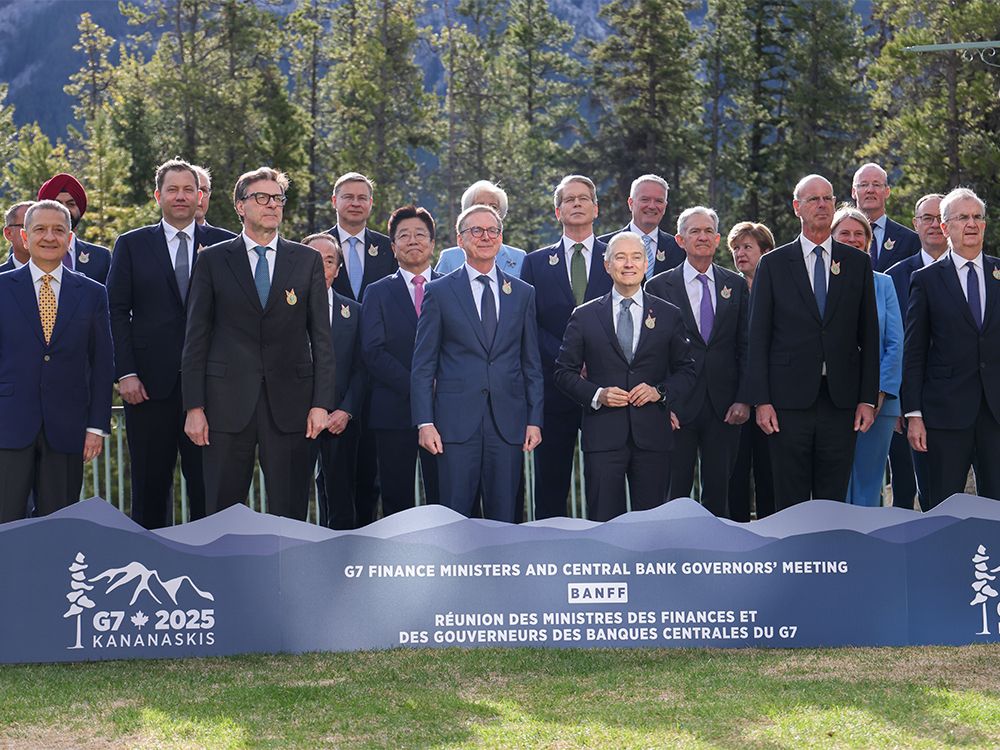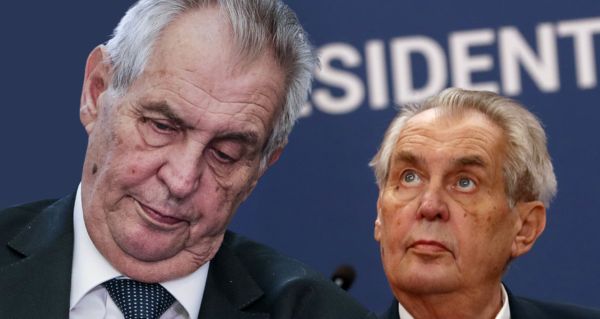Article content
“Policy uncertainty is going up . . . You don’t know what tariff Trump is going to add or take off or delay. Today, we are all totally dependent on his latest tweet and then parsing the words.”
Article content
However, Kirton said the agreement appears to tackle tough issues facing the countries surrounding economic security matters and the war in Ukraine.
Article content
“It certainly meets the standard that Canadian Finance Minister Francois-Philippe Champagne has said at the beginning, when he wanted a clear statement . . . that the G7 was unified,” said Kirton.
Article content
The agreement represents steps forward on addressing non-market practices and dealing with the increased shipment of low-value products from countries such as China, he added.
Article content
But Kirton stressed policy uncertainty has increased, not diminished from its peak.
Article content

Article content
Aside from weaker expectations of economic growth this year, Moody’s downgraded the U.S. credit rating last week, underscoring the situation.
Article content
Indeed, the Conference Board of Canada recently projected the country’s economy will contract during the second quarter and around 160,000 jobs will be lost, with business investment hit hard by the aftershocks of the trade war.
Article content
Article content
(News emerged Thursday that TD Bank will cut about two per cent of its workforce, or about 2,000 positions.)
Article content
For the year, the board predicts feeble GDP growth in Canada of 0.9 per cent.
Article content
Meanwhile, the IMF has also scaled down its expectations globally and in the United States.
Article content
“These things are just so hurtful, not just to Canada’s economy but the U.S. economy,” board chief economist Pedro Antunes said in an interview.
Article content
“It’s a very concerning outlook for Canada and the U.S. and the global economy.”
Article content
For his part, Macklem called this “a pivotal moment for the global economy” and said discussions with the central bank governors were constructive.
Article content
“Obviously, tariffs are on all of our minds, and the discussion very much did include a focus on improving the dialogue around tariffs and on fixing the problems in global trading systems,” he said.
Article content
“We’re pleased to see that uncertainty has come down, but we clearly have more work to do.”
Article content

Article content
But there were no public indications of a coming shift in tariff policy from U.S. Treasury Secretary Scott Bessent, who attended the event.
Article content
It was unlikely the G7 group would resolve the trade concerns at this gathering, said Matthew Holmes, executive vice-president of the Canadian Chamber of Commerce.
Article content
Article content
He welcomed the message of unity in the communique and called it a “building block” in a broader process, which includes next month’s leaders’ meeting in Alberta.
Article content
“We see the value still in G7, and so we feel a certain amount of optimism coming out of that,” he said.
Article content
Former finance minister and deputy prime minister John Manley noted Wednesday that such communiques are worked out months in advance between the delegations and their officials.
Article content
The key for Champagne, who took over the finance portfolio in March, was to engage with each of his G7 colleagues and forge relationships during an uncertain time.
Article content
“The reason they are together is to lay the groundwork for the Kananaskis summit,” Manley said.
Article content
“He’s got to build relationships, including with the (U.S.) Treasury Secretary and with his other counterparts — maybe especially his other counterparts — because clearly the Canadian strategy now is to promote engagement with particularly the Europeans and the Japanese, and less reliance on the United States.
Article content
“So those other relationships are also very important for him to build.”
Article content
Chris Varcoe is a Calgary Herald columnist.
Article content
Article content








Leave a Reply